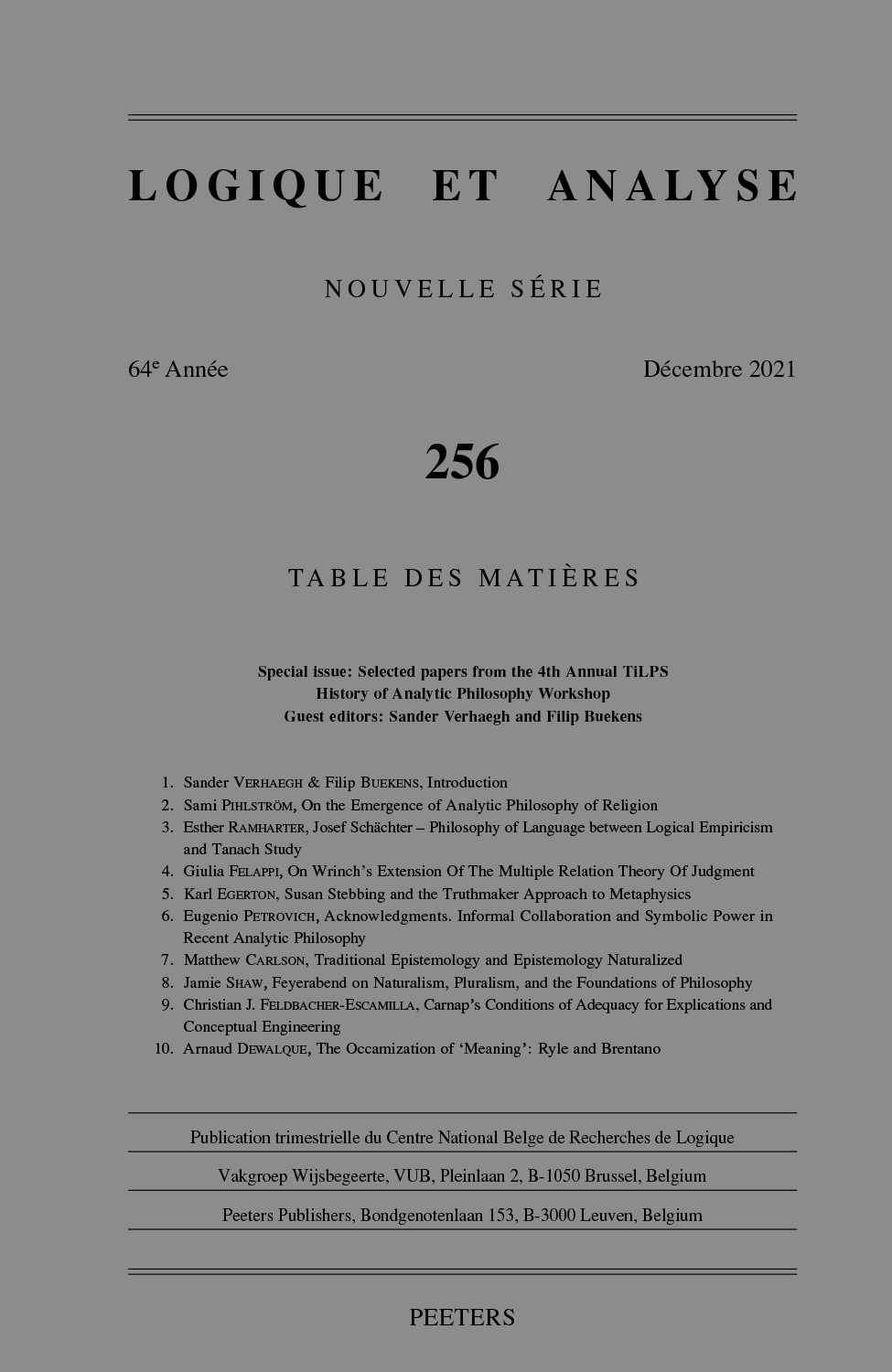 previous article in this issue previous article in this issue |

Preview first page |
Document Details : Title: Comparing Classical and Relativistic Kinematics in First-Order Logic Author(s): LEFEVER, Koen , SZÉKELY, Gergely Journal: Logique et Analyse Volume: 241 Date: 2018 Pages: 57-117 DOI: 10.2143/LEA.241.0.3275105 Abstract : The aim of this paper is to present a new logic-based understanding of the connection between classical kinematics and relativistic kinematics. We show that the axioms of special relativity can be interpreted in the language of classical kinematics. This means that there is a logical translation function from the language of special relativity to the language of classical kinematics which translates the axioms of special relativity into consequences of classical kinematics. We will also show that if we distinguish a class of observers (representing observers stationary with respect to the 'Ether') in special relativity and exclude the non-slower-than light observers from classical kinematics by an extra axiom, then the two theories become definitionally equivalent (i.e., they become equivalent theories in the sense as the theory of lattices as algebraic structures is the same as the theory of lattices as partially ordered sets). Furthermore, we show that classical kinematics is definitionally equivalent to classical kinematics with only slower-than-light inertial observers, and hence by transitivity of definitional equivalence that special relativity theory extended with 'Ether' is definitionally equivalent to classical kinematics. So within an axiomatic framework of mathematical logic, we explicitly show that the transition from classical kinematics to relativistic kinematics is the knowledge acquisition that there is no 'Ether', accompanied by a redefinition of the concepts of time and space. |
|


